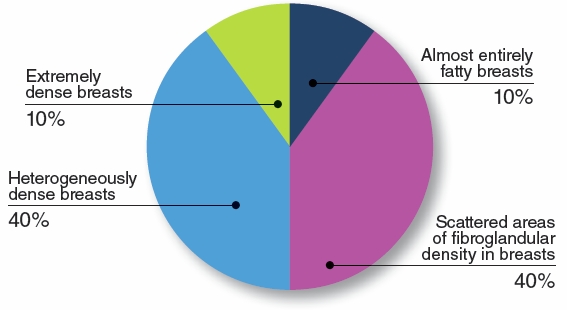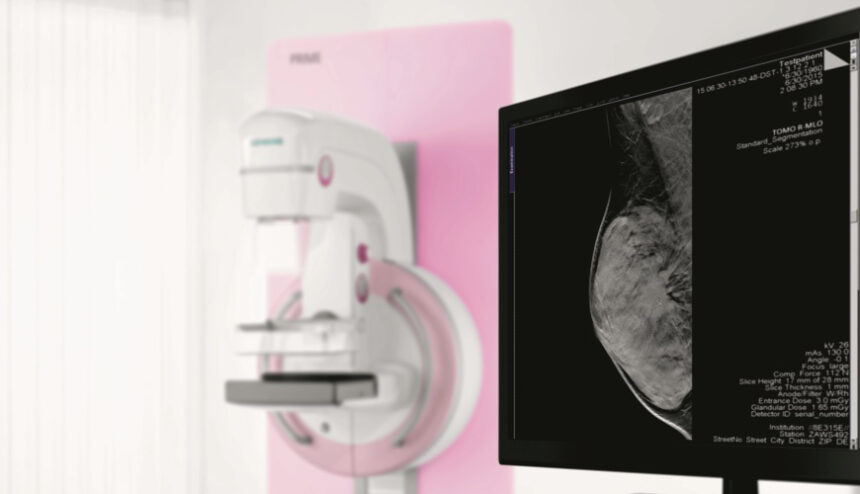 For years, you’ve heard about the importance of breast self-examination and why you should have regular mammograms. Now, it’s also important to understand breast density and what it could mean to determine your overall breast health. Breasts consist of fibrous and glandular tissue and fatty tissue. Dense breasts have little fat but more fibrous and glandular tissue.
For years, you’ve heard about the importance of breast self-examination and why you should have regular mammograms. Now, it’s also important to understand breast density and what it could mean to determine your overall breast health. Breasts consist of fibrous and glandular tissue and fatty tissue. Dense breasts have little fat but more fibrous and glandular tissue.
Breast density in the U.S.
• 10% of women have almost entirely fatty breasts
• 10% have very dense breasts
• 80% fall between the two extremes
Dense or not dense?
 Radiologists classify breast density using a 4-level density scale. Each mammogram is assigned to one of the categories. If your mammogram shows dense breasts, a brochure about breast density is sent to you along with your mammogram results. Awareness of breast density matters because dense breasts may increase your chances of getting breast cancer. Dense tissue and breast lumps appear white on a mammogram, making the results harder to read. This may cause the traditional 2D mammograms of women with dense breasts to be less accurate.
Radiologists classify breast density using a 4-level density scale. Each mammogram is assigned to one of the categories. If your mammogram shows dense breasts, a brochure about breast density is sent to you along with your mammogram results. Awareness of breast density matters because dense breasts may increase your chances of getting breast cancer. Dense tissue and breast lumps appear white on a mammogram, making the results harder to read. This may cause the traditional 2D mammograms of women with dense breasts to be less accurate.
3D mammography helps level the odds, especially for women with dense breasts. Images captured using digital breast tomosynthesis (3D mammography) provide different angles that make it easier to see abnormalities in all breasts. It also decreases the potential for additional testing.
Even women at low risk for breast cancer with entirely fatty breasts should still get an annual mammogram starting at age 40. Discuss your breast density with your doctor and learn which screening method (2D, 3D, ultrasound, or MRI) is best while also considering your health history.


